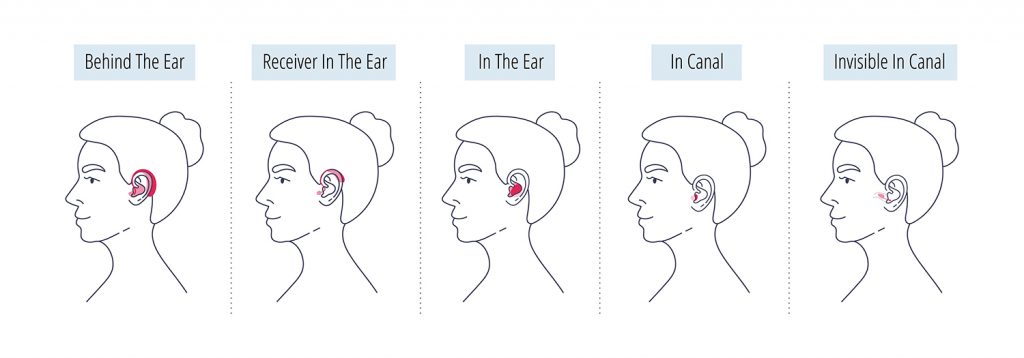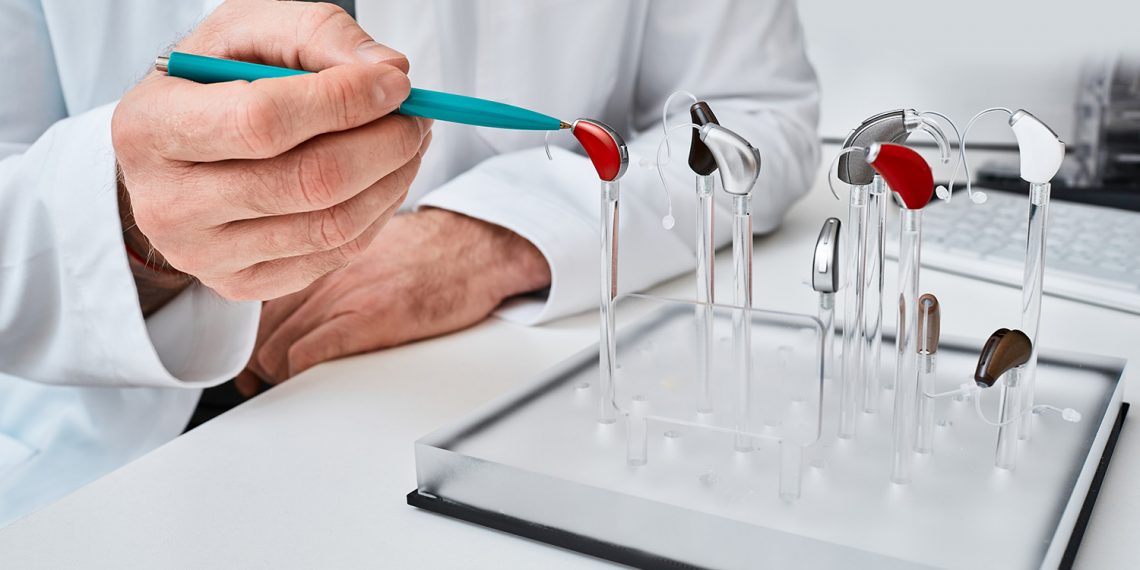Hearing aids have evolved significantly over the years, providing a variety of choices to people with hearing loss. From brand, style to cost, there are numerous considerations to weigh when selecting a hearing aid.
When considering one, it’s vital to understand its various styles, as this knowledge, along with guidance from an Audiologist or Audiometrist, will help you make the right choice.
Styles of Hearing Aids

Behind-the-Ear (BTE):
- BTE hearing aids are one of the most recognized styles, where the primary component sits behind the ear. It connects to a custom-made ear mold or a generic dome, which funnels the sound into the ear canal.
- Suitability: BTEs cater to all degrees of hearing loss, from mild to profound. Some brands also feature a mini-BTE variant.
Receiver-in-the-Ear (RITE) / Receiver-in-the-Canal (RIC):
- RITE/RIC models have a small device positioned behind the ear, connected by an ultra-thin tube. This tube carries a wire to a plug (dome or mold) within your ear, housing the receiver.
- These can be customized with a molded tip if necessary, and some brands even offer a more compact micro or mini variant.
In-the-Ear (ITE):
- These are custom-made aids tailored to an individual’s ear. A professional will take an impression of your ear to craft the device.
- Suitability: These are suited for hearing losses up to severe levels and are an ideal choice for those with dexterity concerns.
In-the-Canal (ITC):
- A subtler version of the ITE, ITC aids have a smaller footprint, showing only a minor section in the outer ear.
- Suitability: Some brands label this as the ‘half-shell’.
Completely-in-the-Canal (CIC):
- As the name suggests, CIC devices are entirely concealed within the ear canal, with only a tiny removal handle visible for easy extraction.
Invisible-in-the-Canal (IIC):
- These aids sit deep within the ear canal, custom-crafted for the wearer. A profoundly detailed impression of the ear is typically required.
Extended Wear IIC:
- A unique hearing aid that doesn’t need an ear impression. Instead, the ear canal is meticulously inspected to ascertain the ideal position for the hearing device. Once fitted and programmed, this hearing aid can be worn continuously for several months before requiring a replacement.
Budget Considerations:
When selecting a hearing aid, it’s imperative to factor in both your auditory needs and budget. Apart from that, the style of the device may also affect its price. Compact devices, however, may come with more technological features and can be more expensive.
Whether you’re new to hearing aids or have used them for years, your personal requirements and the degree of post-purchase service you anticipate will influence your budget. Know what you need and require a lot of follow-up service from your Audiologist or Audiometrist.




